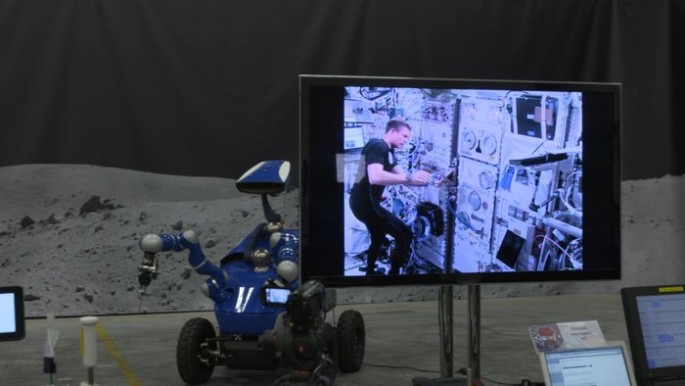European Space Ageny astronaut Andreas Mogensen can apparently remotely operate a robot on Earth while he is aboard the International Space Station, located 250 miles above the planet.
The Danish space explorer sent commands to a robot called the Interact rover to drive towards an experiment board where it used its robotic arm, placing a rounded peg into a hole.
Mogensen reveals that a feedback system helped him control the rover, allowing him to "feel" what task he was carrying out through the robot, located 400 kilometers below the space station, on the Earth's surface.
Astronauts hope to use this kind of technology during the future Mars mission someday. One of the challenges that are presented on the surface of Mars is building habitats for the first human colony or even repairing technical equipment, which can only be carried out via remote control of robots from orbit.
This experiment shows how crew members can deal with technical failures or challenges during the mission involving latency.
This remote robotic system works when video and other forms of feedback go through a complex communications network, exchanging signals among the ISS mission control, relay satellites then back to ground antennas. A one second delay occurs as signals are transmitted across a 90,000 kilometer path.
Amidst all these complex processes running between Earth and space, Mogensen still manages to place the peg into a hole thanks to a laser tool that guided the robot and the astronaut.
This experiment was under the supervision of the European Space Agency's Telerobotics and Haptics Laboratory along with the TU Delft Robotics Institute. Meanwhile, the rover is located inside ESA's technical center in Noordwijk, Netherlands.
Commands are being sent through from the ISS, where the orbiting laboratory is traveling at speeds of 28,000 kilometers per hour.
This successful mission was carried out during Mogensen's brief, eight day visit at the space station who is also Denmark's first astronaut. His other scientific experimental tasks involve a water purification system test where it will utilize a nanotechnology membrane and wearing a new "skin suit" that is designed to prevent back problems during space travel.





















